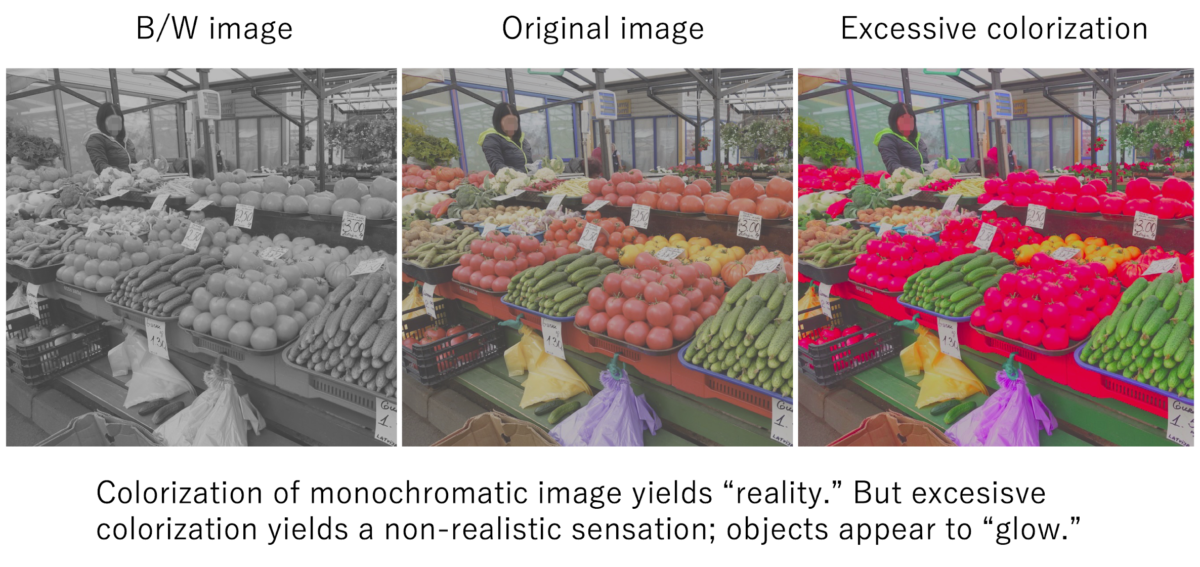D02-2 Cortical mechanisms of reality from colorization and its limitations

Colorization to a black-and-white image yields or increases “reality” of the subject. E.g., b/w movie of 70-80 year ago would appear like a recent episode when colorized. What yields this “reality?” Despite the absence of theoretically “correct” color contrast in natural objects, excessive colorization is known to yield non-realistic appearance, as if objects appear to “glow.” This is similar to changes in the mode of color appearance when object luminance is increased by a hidden spotlight. It implies the presence of some “limit of color / luminance extent” in a natural scene; if color or luminance of an object exceeds the limit, it will appear to “glow.” Then, what determines the “limit?” In this project, we will investigate the limitations of color and luminance contrast in natural images and its neural basis by using psychophysics, functional brain imaging technique, and computational models.
